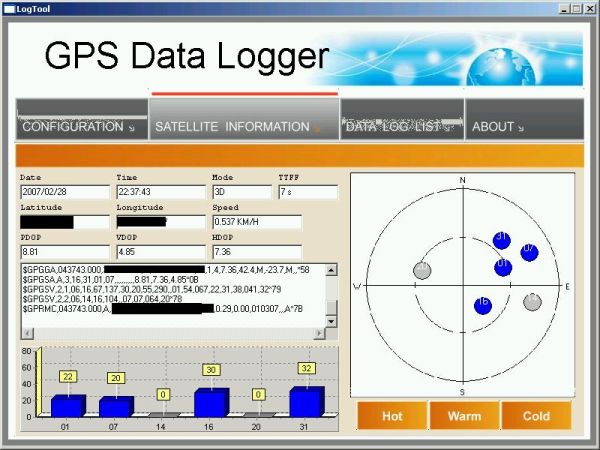Serial Port Data Logger Chip
Product Formats Available: Pre-Assembled Module (AS) or Self-Assembly Electronic Kit ( Soldering Required) 4 channel temperature meter and data-logger kit for Dallas DS18S20 high precision 1-wire digital thermometer sensors. The temperature data, in degrees C or F, is output as a continuous data stream over an RS232 serial port. The board uses a pre-programmed microcontroller and can read up to four DS18S20 digital thermometers. One sensor is included. More can be purchased separately from us (Order Code ).
Serial Port Data Logger Chip For Sale
The DS18S20 has an operating temperature range of -55°C to +125°C and is accurate to +/- 0.5°C over the range of -10°C to +85°C. The sensors can be mounted up to 200metres away from the logger.

No external power is required (the module is powered from the serial port). The output data is a continuous stream in simple text format (sensor number followed by temperature reading to 2 decimal places). Simply capture the data to a text file and then import it into Excel to produce tables and charts of temperature readings over time. The users can tailor the input data stream to suit their purpose - it may be dumped into an Excel spreadsheet, or they can write BASIC programs using the INPUT command to grab the readings. As you can see from the pictures there is not much to the hardware (the PCB is just 45x45mm) and most of the work is done by the PIC.Application Ideas This board is an ideal use for old computers - continuous temperature data logging. A few ideas of how this circuit can be used as given below (additional equipment/software may be required). Simple weather reports for web pages.
Computer server monitoring. Computer power supply temperature warnings. Redundant critical systems monitoring. House temperature monitoring. Complex home automation tasks (start fan if warmer outside during Summer).
Refrigerator monitoring and testing. Brewing temperature regulation. Fish tank heater verification. Microclimate logging (ground versus air temperature). Daylight sensing (LDR on digital input). Primitive locking (using serial number). Temperature Logger for Windows is an easy to use Windows program suitable for 98,NT, ME, 2000, XP and W7.
This program - displays the temperature of each DS18S20 connected - graphs the temperature of each DS18S20 connected - is able to log the time and date stamp and the temperatures to a CSV format file. You can then easily import the files into Excel for analysis - monitors and displays the minimum and maximum temperatures of each sensor 2. You can use Windows HyperTerminal or our no-frills terminal program to see the data on the screen. Just run 'term 2400' (and you may have to press Esc to start the display.) The raw temperature data will display on the screen. Or you can use the original software software developed for the board. For Microsoft Windows.
Tested on Microsoft Windows 95/98SE/XP/W7. For FreeDOS or MS-DOS. Tested on MS-DOS 4.00.950 on a 386/25 5. Source code for all three versions above. Use this version on Linux. For Linux, tested on Red Hat Linux V6.1, with GTK+ V1.2.6. Other software options are supplied with the product.
You might also like.
README.md lua-data-logger This simple LUA script is used for logging serial port data send by an Arduino to a OpenWRT router The Project contains a Arduino Sketch (temperature.ino) within the folder temperature which bases loosly on the DS18x20Temperature example from the Arduino IDE 1.0.5. Arduino Sketch The Arduino programm sends the Sensor ID and the calculated temperature in celsius in a line via the serial port of the Atmega chip for all found sensors once an entry has been registered via the serial port.
LUA The LUA script is designed to receive this serial data and write it to a logfile and could be used as a cron job and it is tested on a OpenWRT backfire installation on a Linksys WRT54 router. In order to ensure that only valid data is stored, the checksum of the sensor ID is calculated and compared with the data for receiving.
Windows Serial Port Logger
The calculation of the sensor ID requires bitwise operations and conversion of hexadecimal to binary numbers. This is done with parts of the luabitv0.4 library Configuration The LUA script read.lua cound be configured respecting the Serial Port Adress and the path, where the Logfiles are stored: local port = '/dev/tts/1' local path = '/tmp/tempdata' This configuration options are found on the top of the read.lua file. Logging If the logging is started, a file based on the current date is created in the destination path and holds a line for each sensor started with the time of the mesurement, the Sensor ID and the mesured temperature in celsius.
Serial Port Logger
If a glitch is identified, a log message is stored in a specific file 'glitch.log' in the same directory. See: for more details.
Comments are closed.